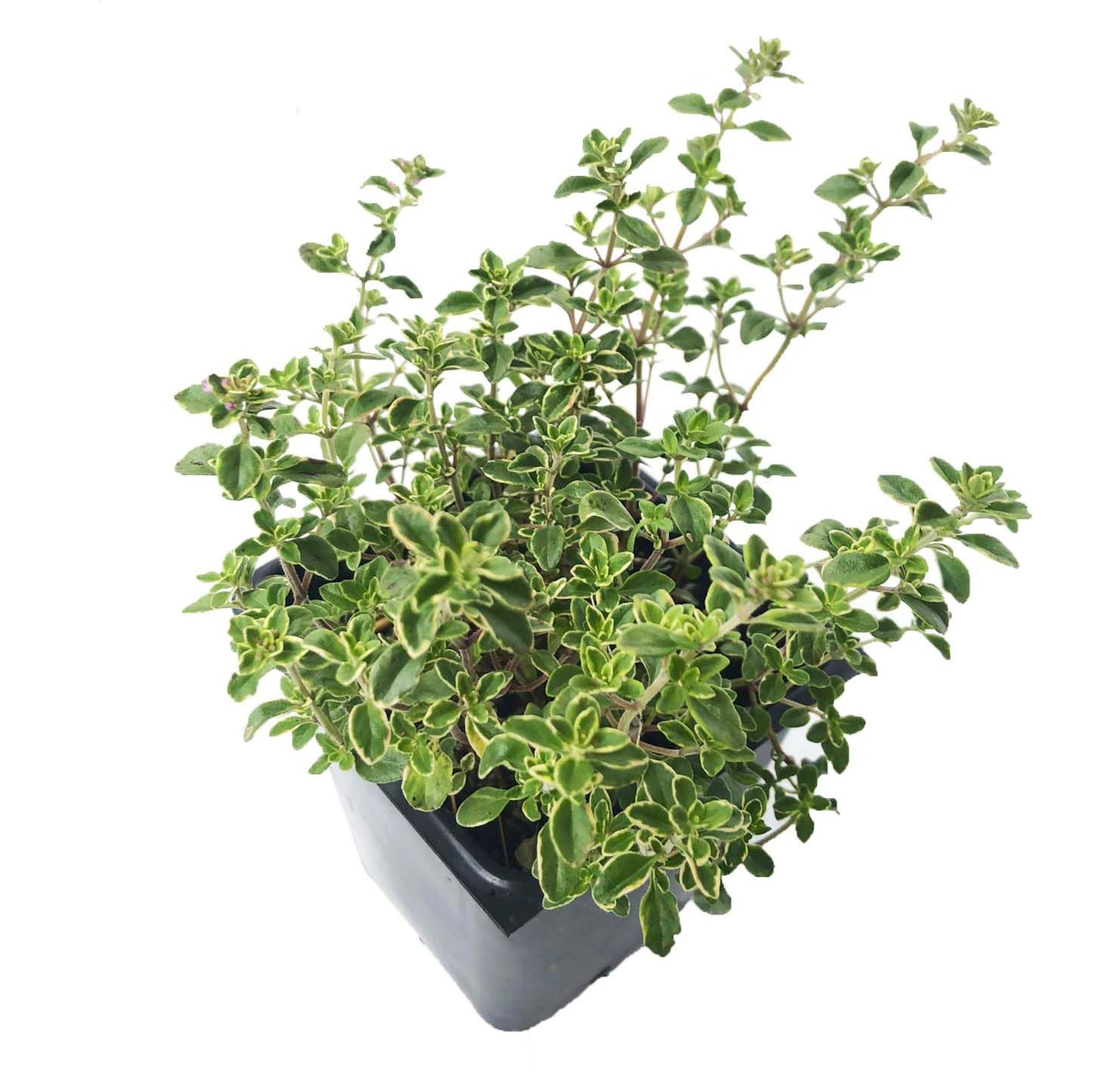زعتر italy
زعتر italy
Couldn't load pickup availability
thymus citrus lemon variegated
Growing Thymus citriodorus ‘Variegatus,’ commonly known as Variegated Lemon Thyme, adds both aromatic and visual appeal to your garden. Here’s a guide on how to grow Thymus citriodorus ‘Variegatus’:
1. Site Selection: Choose a sunny location for your Variegated Lemon Thyme. This herb thrives in full sunlight, receiving at least 6 hours of direct sunlight per day.
2. Soil Preparation: Ensure well-draining soil to prevent waterlogged conditions. Amend the soil with organic matter, such as compost, for improved drainage and fertility. Variegated Lemon Thyme prefers a slightly alkaline to neutral pH.
3. Planting: Plant Thymus citriodorus ‘Variegatus’ in the spring or early fall. Space the plants about 12 inches apart to allow for spreading. Dig a hole slightly larger than the root ball and plant at the same depth it was in the nursery container.
4. Watering: Water the newly planted thyme regularly to establish a strong root system. Once established, Variegated Lemon Thyme is drought-tolerant. Water when the soil feels dry, but avoid overwatering.
5. Mulching: Apply a layer of mulch around the plants to conserve moisture, suppress weeds, and regulate soil temperature. Keep the mulch away from the base of the plant.
6. Fertilizing: Thyme doesn’t require heavy feeding. A light application of a balanced fertilizer in spring is usually sufficient. Avoid high-nitrogen fertilizers, as thyme prefers lean soil for better flavor.
7. Pruning: Regularly prune Thymus citriodorus ‘Variegatus’ to maintain a compact and bushy form. Trim back the plants after flowering to encourage new growth and to remove spent flowers.
8. Winter Care: Variegated Lemon Thyme is generally hardy, but in colder climates, a layer of mulch can provide winter protection. Trim back any dead or damaged growth in late winter or early spring.
9. Pest and Disease Control: Thyme is resistant to many pests and diseases. Keeping the area clean and well-maintained helps prevent issues.
Monitor for pests like aphids and treat them with insecticidal soap if necessary.
10. Harvesting: Harvest Variegated Lemon Thyme leaves for culinary use once the plant is well-established. Trim the stems as needed, but avoid removing more than one-third of the plant at a time. This thyme variety adds a hint of citrus flavor to dishes and is excellent for seasoning.
11. Companion Planting: Variegated Lemon Thyme can be used as a companion plant to repel certain pests from nearby vegetables or ornamental plants.
12. Propagation: Propagate Thymus citriodorus ‘Variegatus’ through division or by taking cuttings in the spring. Division helps rejuvenate older clumps and provides new plants for propagation.
By following these guidelines, you can successfully grow Variegated Lemon Thyme, enjoying its aromatic foliage, variegated appearance, and culinary benefits. Adjust care practices based on your local climate and growing conditions.
Share

